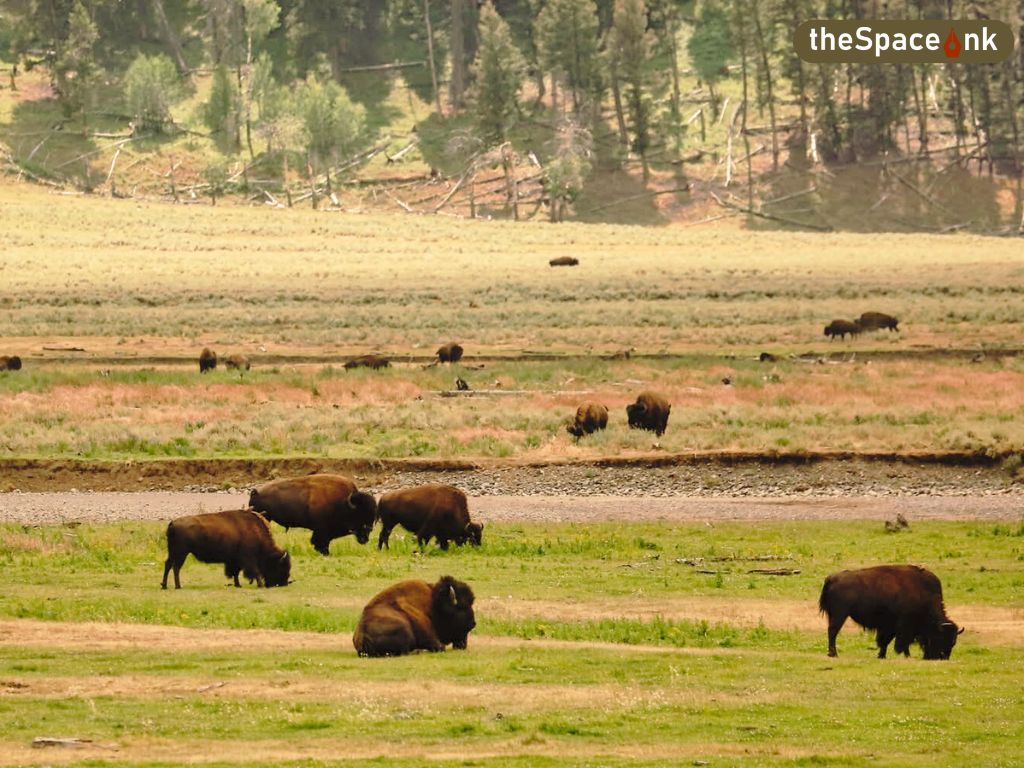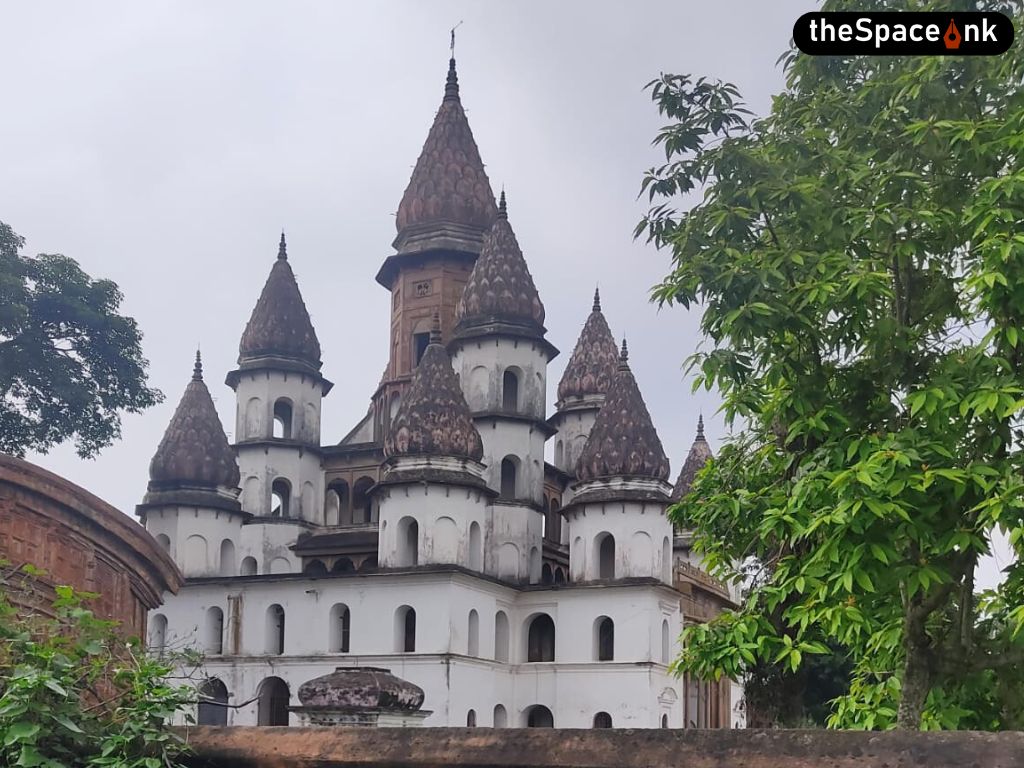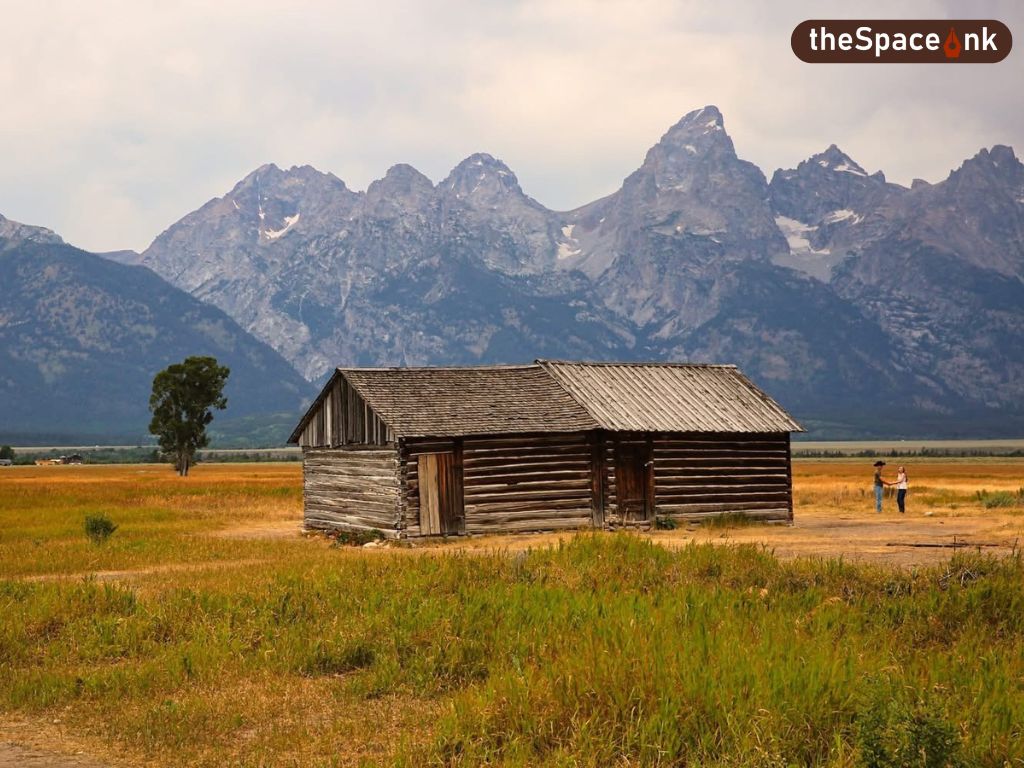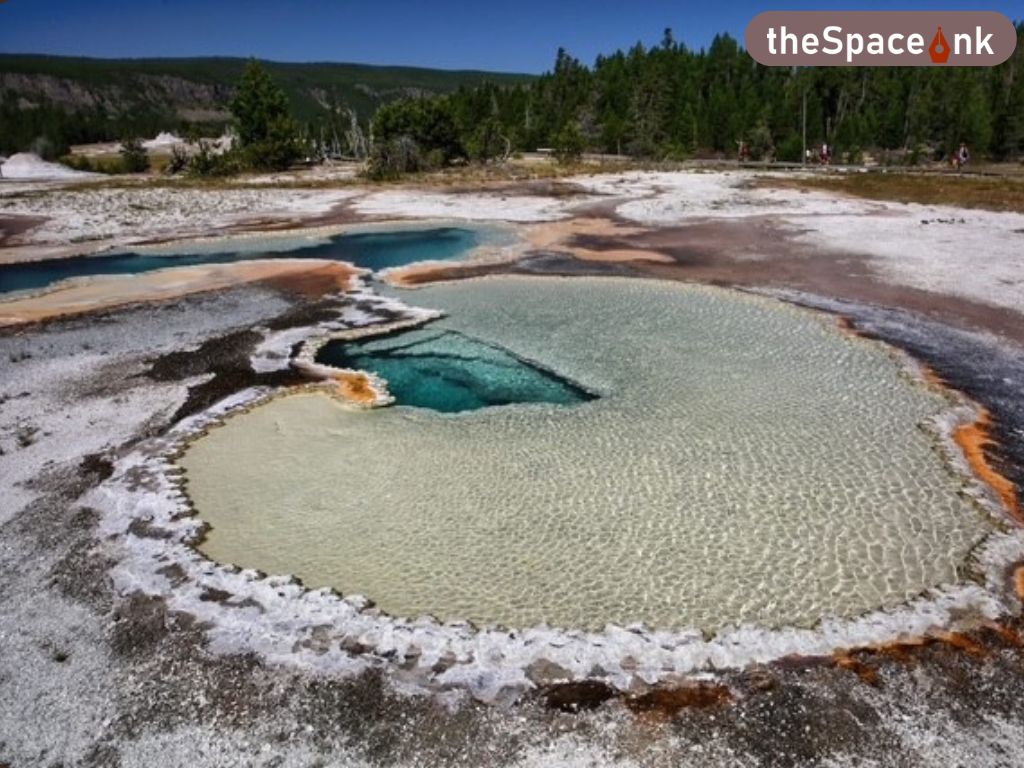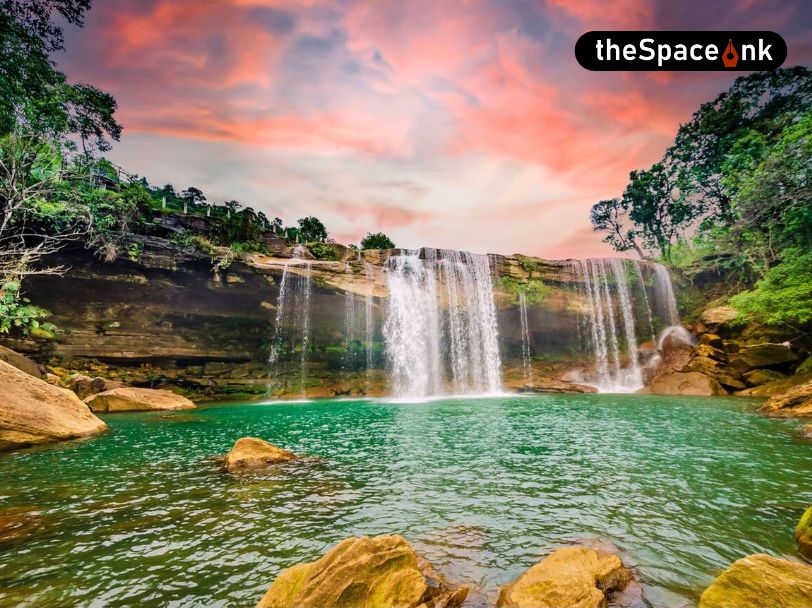(Yellowstone)
The next morning, as we made our way to the Grand Canyon of the Yellowstone, we noticed the tall pines. My teenage son, a tree enthusiast, had conducted his own research and shared that, although there are seven different species of coniferous trees, Lodgepole pines dominate the landscape here. This variety of pine is remarkably well-equipped to respond to fire, making it more resilient and a good fit for the park that is no stranger to earthquakes, volcanic eruptions, and fires.
An interesting tidbit I will toss in here is that the national historic landmark, Old Faithful Inn, considered the largest log structure in the world, was built using local lodgepole pine logs for its walls. Known for its formidable size and rustic style, the Inn remains a sight to behold in all seasons.
Also Read: A Journey Back to Self and Nature: Yellowstone and Grand Teton
The Grand Canyon of Yellowstone is neither as high nor as large as the real Grand Canyon in Arizona, but it holds a special place in the history of how Yellowstone became the nation’s first national park. Art played a significant role in turning this place into an icon. Without delving too deeply into history, let me provide a brief overview to help you understand the significance of the place.
In 1871, geologist Ferdinand Hayden undertook an expedition to the region northwest of Wyoming, driven by the tall tales that had surfaced about the region’s uniqueness. The designated photographer for the expedition was William Jackson, who took some stunning black-and-white pictures of the area, including the Grand Canyon Falls. Thomas Moran was also included as part of the voyage as a backup, in case the camera images were destroyed, given the rugged terrain. Moran returned from the excursion and painted a massive seven-by-12-foot masterpiece, naming it The Grand Canyon of Yellowstone.
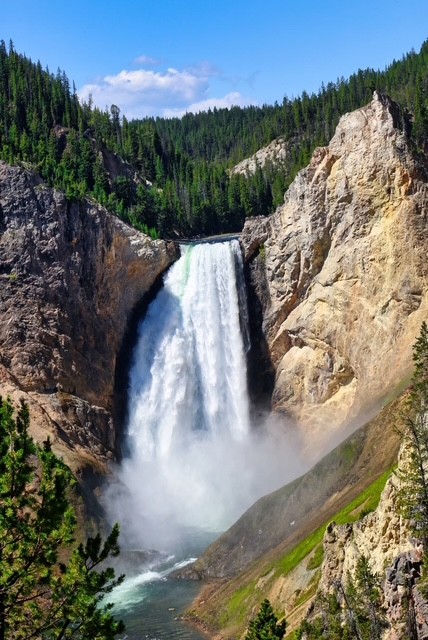
The Congress fell in love with it and decided to purchase it. Jackson’s photographs and Moran’s painting proved to be a powerful tool used to sway legislators into declaring Yellowstone a national park, protecting it from settlement, and preserving it for posterity.
As we reached the Lookout Point, one of the more popular spots on the north rim side, we caught a stunning view of the Lower Falls. The mix of yellow and pink mineral stains on the wall of the canyon oozing out occasional puffs of steam, the frothy Lower Falls, and the mostly green Yellowstone River truly looked like an artist’s delight. No wonder Moran returned for two more expeditions and created many more paintings of the area. I wish I had more time to sit and ponder what an artist might be feeling observing this magnificent landscape. I did find a sliver of time while my friends and husband did a trail to the bottom.
“Stretched for miles and miles of open fields, with the ancient mountains in the background, the valley feels like a window into America’s wild past.”
For hikers who don’t mind elevation, there are plenty of trails to climb down and see the Falls up close. We went up further to Inspiration Point, from where you can’t see the Falls, but nevertheless get an outstanding view of the Yellowstone River, carving the canyon. We also stopped briefly at Uncle Tom’s Point overlook on the south rim, which allows a grand view of the Upper Falls, which is considerably less dramatic than the Lower Falls, but where the river takes a sharp bend and begins its major descent into the canyon.
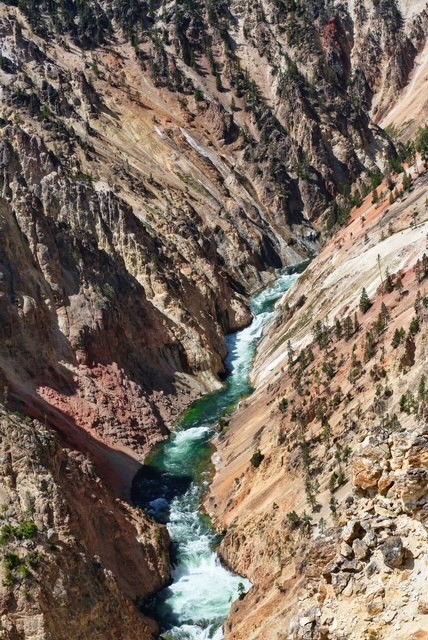
We proceeded towards the Lamar Valley from there, as our time at the park was limited and we still had a lot to cover. In just an hour, as we took a sharp right from the Roosevelt Tower junction, we entered a completely different world.
Lamar Valley: Yellowstone
The valley of rolling meadows and pristine landscapes renders you speechless as you take in its jaw-dropping vistas. Stretched for miles and miles of open fields, with the ancient mountains in the background, the valley feels like a window into America’s wild past. It’s one of the best places in the world to see herds of wild bison and packs of wolves. Though dawn and dusk are the best times to see more of them, we were fortunate to see elk, bison, and even wolves, from a distance in the afternoon.
Also Read: Reverie of a Pluviophile: Exploring Magical Meghalaya
This part of the park has very little thermal activity, which may also be the reason why wild populations reside here. About ten miles from the Tower junction is the Lamar Valley Buffalo Ranch, created back in 1907 to help preserve Yellowstone’s bison, which had dropped to double digits once. A little further, we pulled over at the Lamar Valley lookout, where herds of majestic bison, with their powerful frames, reminded us of the times when they thundered through the valley, ruling the American West.
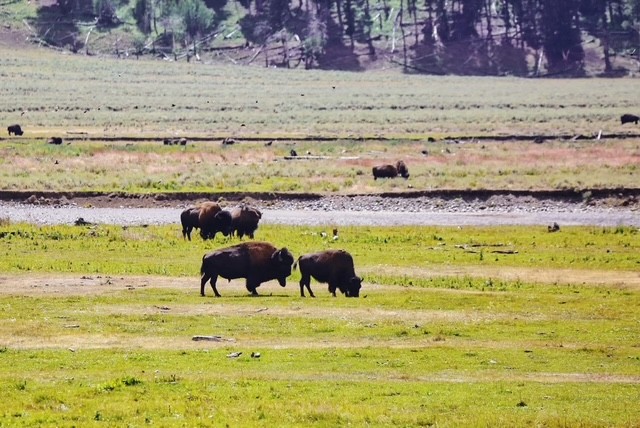
As we turned around to head back to the Tower junction, black clouds had slid in, casting ethereal shadows on the fields. We got to witness how rapidly the temperature and the views can change in the valley as we bid goodbye to its vastness.
Mammoth Hot Springs: Yellowstone
We crossed the junction and continued driving to the northern end of the park, arriving at the Mammoth Hot Springs. Here, we found the Springs different from the other parts of the park. The water flowed down terraced hillsides, resembling a gentle cascade. The unique fizzing, foaming, and frozen appearance was due to hot water flowing through limestone, rather than the volcanic rhyolite rock found elsewhere in the park. The limestone is from the ancient inland sea that once covered the park.
“As the world’s first national park, the District was established over forty years before the National Park Service was created. With limited funding and staff, the park soon fell victim to vandals and poachers.”
As the hot water and gases travel through cracks and fissures on their way to the surface, dissolved limestone is carried out and deposited as white travertine or calcium carbonate. We spotted a deer near the Angel Terrace. As it roamed amidst the sparse vegetation at ease with the human visitors, I noticed charred trees that added an eerie effect to the surroundings. A thought crossed my mind. What if inspired photographers could capture a few monochromatic shots of the place? Wouldn’t that be incredible?
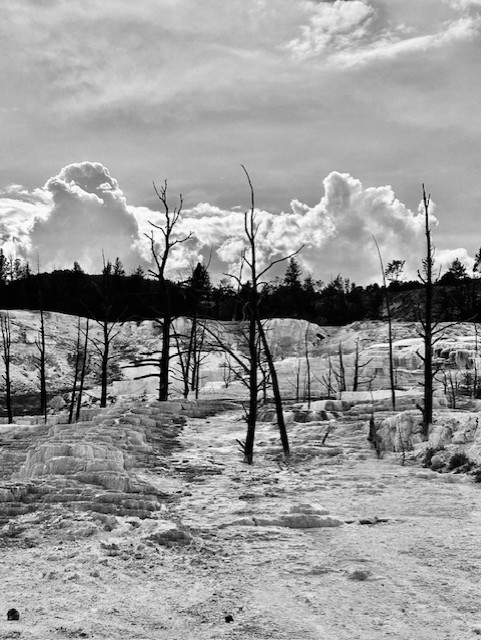
While the beauty of the place draws many nature lovers year-round, the Mammoth Hot Spring town is also a draw for history buffs. As the world’s first national park, the District was established over forty years before the National Park Service was created. With limited funding and staff, the park soon fell victim to vandals and poachers. In desperation, the park turned to the army for help. The US cavalry arrived to restore order and was headquartered at Mammoth Hot Springs.
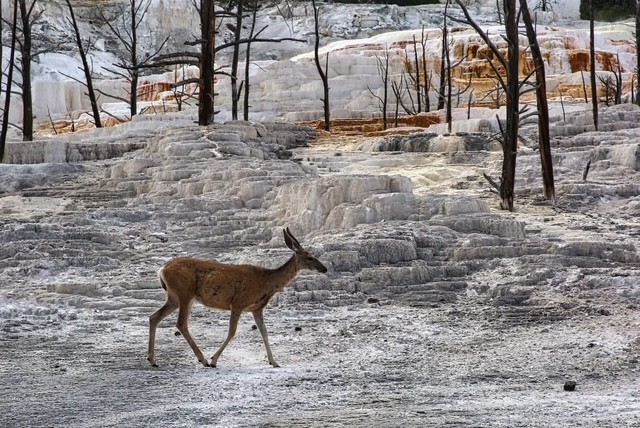
A stroll through the town will take you to several wooden clapboard and stone buildings in Mammoth Village, which are historic army offices and quarters. After the National Park Service was created in 1916, it soon employed many of the army personnel already stationed in the park. Park rangers modeled much of their earlier duties after the army personnel who protected Yellowstone for 32 years. That might be a reason why the park ranger’s uniforms still resemble those of the military.
Also Read: Norway-1: An Exhilarating Fairytale Adventure through Fjord Land
After treating ourselves to a cone of ice cream and picking up a few souvenirs at the general store, we headed back for the night to see the sunset near the Canyon Village, and happened to see a lone bison close by the road, chewing on grass unperturbed by the traffic it had attracted.
Photos by Shubhankar Chowdhury
Sreya Sarkar is a freelance writer based out of Massachusetts, with her fingers dipped in multiple writing projects. A public policy professional by training, she writes socio-political columns for Indian news magazines like The Quint and Dainik Bhaskar. She also pens short stories for literary magazines.


